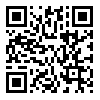BibTeX | RIS | EndNote | Medlars | ProCite | Reference Manager | RefWorks
Send citation to:
URL: http://jdm.tums.ac.ir/article-1-8-en.html
Background and Aims: The exfoliated human deciduous tooth contains multipotent stem cells [Stem Cell from Human Exfoliated Deciduous tooth (SHED)] that identified to be a population of highly proliferative and clonogenic. These cells are capable of differentiating into a variety of cell types including osteoblast/osteocyte, adiopcyte, chondrocyte and neural cell. The aim of this study was to evaluate the differentiation of SHED to osteoblast in standard osteogenic medium and comparing the results with medium which supplemented with glucosamine in form of chitosan.
Materials and Methods: Dental pulp cells were isolated from freshly extracted primary teeth, digested with 4 mg/ml collogenase/dispase, and grown in Dulbecco's modified Eagle's medium with 10 percent fetal bovine serum. The clonogenic potential of cells was performed after 3 weeks of culture. Flowcytometric analysis, performed at day 21 of culture to identify surface markers of mesenchymal stem cells. The cells from 3rd passage were used for osteogenic differentiation in routine osteoinductive medium. Chitosan (10 μg/ml) was added to the culture medium of case group. Alizarin Red Staining and Alkaline Phosphatase (ALP) activity were done to evaluate osteogenic differentiation in the developing adherent layer on the third passage. The results were analyzed using T-test. For the analysis of normal distribution of data, non-parametric Kolmogrov-Smirnov test was used.
Results: The colonogenic efficiency was more than 80%. Flowcytometric analysis showed that the expression of mesenchymal stem cell marker CD90, CD105 and CD146 were positive in SHED, while hematopoietic cell marker CD34, CD45 and endothelial cell marker CD31 were negative. Quantitative analysis of Alizarin Red Staining demonstrated that: mineralized nodule formation was higher in the group supplemented with glucosamine (chitosan). Results from Alkaline Phosphatase activity test, on day 21, demonstrated a significantly higher ALP activity in the group supplemented chitosan (P<0.001).
Conclusion: Stem cells isolated and cultured from exfoliated deciduous teeth pulp can be differentiated to osteoblast. Addition of chitosan can be beneficial to promote osteogenic differentiation of these cells.
Received: 2012/09/8 | Accepted: 2013/05/15 | Published: 2013/09/15
| Rights and Permissions | |
 |
This work is licensed under a Creative Commons Attribution-NonCommercial 4.0 International License. |




